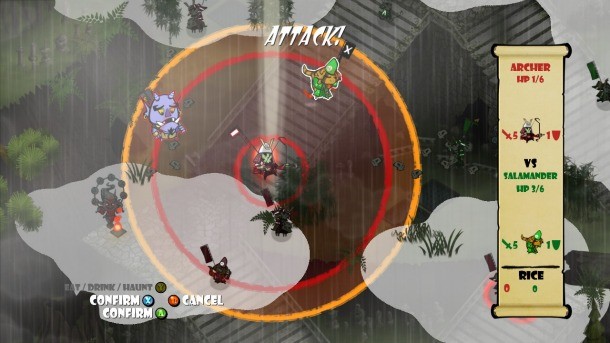The Skulls Of The Shogun Strategy Guide

Every general needs an advisor to help them to victory every now and again, so heed this advice if you want to become the shogun of the Undead in Skulls of the Shogun.
The XBLA-exclusive game is a turn-based isometric strategy title without the grid. Skulls' free-ranging movement system not only lets you move before and after you attack, but also see where you can move before you commit to any actions. Overall, the game gives you a lot of tools to execute your plans, so here are some of the ways you can use them and other strategies to success.
DO YOUR RECON
- When you select a character, you'll see their movement sphere which shows the area in which that unit can move. This changes in real time, shrinking and expanding according to how much movement is left. Use this feature to test out how far a unit can move, what it can attack, where it can find cover, and your retreat options once you attack. You can even see the movement spheres of your enemies. Although you can't see how far archers' arrows will fly, absolutely use this tool to your advantage to see which enemy units might be able to strike you when it's their turn.
- Apart from being able to test out the perimeters of movement, you can also see how much damage you would do to an enemy unit if you attacked it. This is useful when you want to see how many of your soldiers' attacks it would take to fell a foe.
- Plan Everything. You always have five orders with which to control your units (i.e. you can move/attack with five units). I like to plan out my actions of all five units first before I actually commit to doing anything.
- The game lets you cancel actions up to a certain point. This means that you have to be careful when you actually confirm an action, but also it gives you a certain amount of leeway.

RESOURCE MANAGEMENT
- There is no turn limit in the game, but it is important to start off right on a board. Use horse-mounted cavalry units to haunt shrines, rice paddies, and monk shrines before your opponent can lay claim to them. Haunting these resource nodes leaves your unit vulnerable for an extra turn, but if you can divide the enemies' attention, you can often sneak around with recon units capturing them.
- Be sure to remember to haunt shrines that have already been used by your opponent, this makes its corresponding monk disappear from the board. Don't forget that if one of your monks is killed in action, they can be respawned if you've still haunted the shrine.
- Rice is a finite resource on each board, so stockpiling it so your opponent cannot is important.

GROUND RULES
- The most important environmental rule to remember is that any unit – including generals – can be pushed off of a cliff or into the water for an instant death. Units engaged in a spirit wall (see below) cannot be knocked back, however.
- The bramble patches incur additional damage whenever a unit is knocked back into them.
- Bamboo thickets provide cover (enemies have an 80% chance to hit you), but they aren't the only way to get cover. Repositioning units around corners can move them out of range of archers.
I WANT YOUR SKULLS
- You cannot eat the skulls of your own units. However, if a friendly unit has already eaten a skull, that will drop and can be consumed by anyone if your ally falls in battle.
- Save some skulls for your general. If your general stays behind the front lines (as is recommended), be sure to leave some skulls for him to eat. This way your general can eat his way to full power when you're ready to use him.
COMBAT
- Form spirit walls with relatively weak infantry units by placing them next to each other. Not only can enemy units not pass, but the units in the spirit wall will be impervious to knock backs and ranged units behind the wall cannot be counter-attacked.
- Concentrate your attacks to kill units outright rather than weaken multiple foes. A dead enemy cannot comeback to attack you.
- The death of a general is an instant win condition. That being said, your general is a powerful unit that can wreak havoc. In most boards your general gets stronger if he doesn't move (he's considered to be meditating), but he can turn the tide of battle if used wisely.
For more on the game, take a look at the review or the Test Chamber.


Get the Game Informer Print Edition!
Explore your favorite games in premium print format, delivered to your door.
- 10 issues per year
- Only $4.80 per issue
- Full digital magazine archive access
- Since 1991









